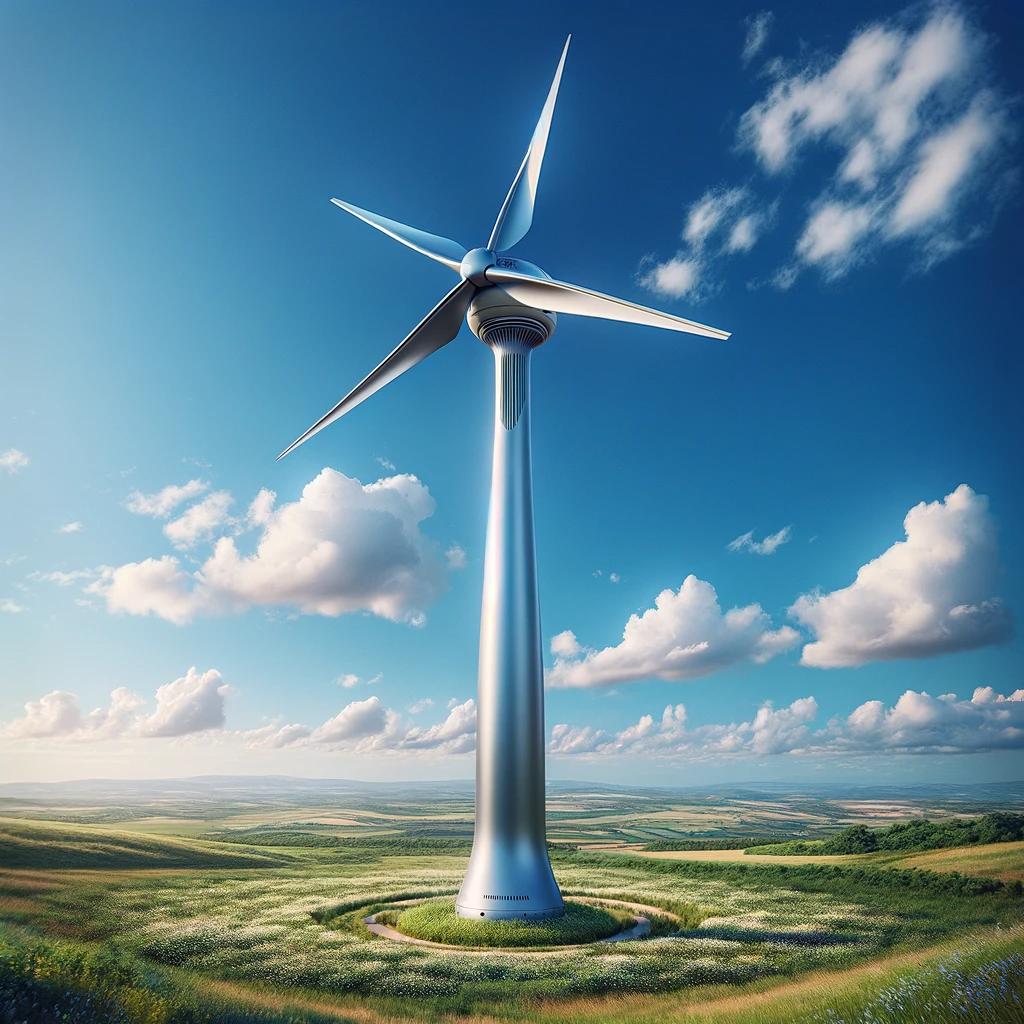Introduction
Wind power is highly regarded as one of the most promising energy sources in the pursuit of sustainability and clean energy. Vertical Axis Wind Turbines (VAWTs) have arisen as an intriguing alternative to the more prevalent Horizontal Axis Wind Turbines (HAWTs) in this sector of innovation. This blog post thoroughly examines Vertical Axis Wind Turbines (VAWTs), investigating its design, benefits, uses, and prospects within the realm of renewable energy.

Table of Contents
What are Vertical Axis Wind Turbines?
Vertical Axis Wind Turbines (VAWTs) are a specific form of wind turbine in which the primary rotor shaft is oriented vertically, and the major components are situated at the turbine’s base. This design differs from the conventional horizontal axis turbines that are more prevalent in large-scale wind farms. Vertical Axis Wind Turbines (VAWTs) are available in many designs, with the Darrieus and Savonius versions being the most widely used.
Advantages of VAWTs
- VAWTs have the advantage of omni-directional wind acceptance, meaning they may utilize wind from any direction without requiring yaw systems, unlike HAWTs.
- Reduced Space Requirement: The vertical arrangement of these structures enables them to occupy less ground area.
- Maintenance Convenience: Due to the positioning of key components at the bottom, the maintenance of VAWTs is typically more convenient and secure.
- Reduced Noise Pollution: Vertical Axis Wind Turbines (VAWTs) often operate with less noise, making them appropriate for residential locations.
- Reduced Wind Speed Requirement: They can function at lower wind speeds, making them well-suited for urban and suburban locations.
Harnessing the Wind: The Rise of Vertical Axis Wind Turbines
Introduction
In the quest for sustainable and clean energy sources, wind power stands out as one of the most promising. Among the innovations in this field, Vertical Axis Wind Turbines (VAWTs) have emerged as a fascinating alternative to the more commonly seen Horizontal Axis Wind Turbines (HAWTs). This blog post delves into the world of VAWTs, exploring their design, advantages, applications, and potential in the renewable energy landscape.
What are Vertical Axis Wind Turbines?
Vertical Axis Wind Turbines are a type of wind turbine where the main rotor shaft is set vertically, and the main components are located at the base of the turbine. This design is in contrast to the traditional horizontal axis turbines which are more common in large-scale wind farms. VAWTs come in various designs, with the most popular being the Darrieus and the Savonius models.
Advantages of VAWTs
- Omni-Directional Wind Acceptance: Unlike HAWTs, VAWTs can harness wind from any direction without the need for yaw mechanisms.
- Lower Ground Space Requirement: Their vertical orientation allows for a smaller footprint on the land.
- Ease of Maintenance: With major components located at the base, maintenance of VAWTs is generally easier and safer.
- Less Noise Pollution: VAWTs typically operate more quietly, making them suitable for residential areas.
- Lower Wind Speed Requirement: They can be operational at lower wind speeds, making them ideal for many urban and suburban areas.
Applications of VAWTs
- Urban Settings: VAWTs are well-suited for urban contexts due to their compact size and minimal noise levels, making them acceptable for rooftop installations.
- Off-Grid Power Generation is well-suited for rural places that have difficulties in accessing standard power grids.
- VAWTs can serve as an additional energy source, complementing other renewable sources, to enhance efficiency and dependability.Educational and research facilities are utilized inside academic environments for the goals of conducting research and facilitating education.
Challenges and Limitations
- Reduced Efficiency: Vertical axis wind turbines (VAWTs) often exhibit a lower efficiency rate in comparison to horizontal axis wind turbines (HAWTs).
- Durability Issues: The vertical configuration may result in accelerated deterioration of the components.
- Restricted in big-Scale Implementation: Presently, Vertical Axis Wind Turbines (VAWTs) are not as feasible as Horizontal Axis Wind Turbines (HAWTs) for generating power on a big scale.
Future of VAWTs
The prospects for Vertical Axis Wind Turbines are favorable, especially in urban and residential environments. Current research is dedicated on enhancing the effectiveness and longevity of the subject. Anticipated advancements in materials and design are projected to enhance the competitiveness and versatility of VAWTs. VAWTs have the potential to be a vital component of the renewable energy mix as the globe shifts towards more sustainable energy sources.
Vertical Axis Wind Turbines are a notable advancement in the expansion of wind energy technologies. Their distinctive form and adaptability to diverse surroundings make them a tempting option for specific applications. With the progression of technology, it is foreseeable that Vertical Axis Wind Turbines (VAWTs) will play a crucial role in our sustainable energy future.

[…] Wind Turbine Design: Focusing on efficiency and sustainability, these projects explore novel blade designs and energy capture methods. […]
[…] Vertical Axis Wind Turbine (VAWT) is characterized by its simple construction, affordability, ability to self-start at low […]